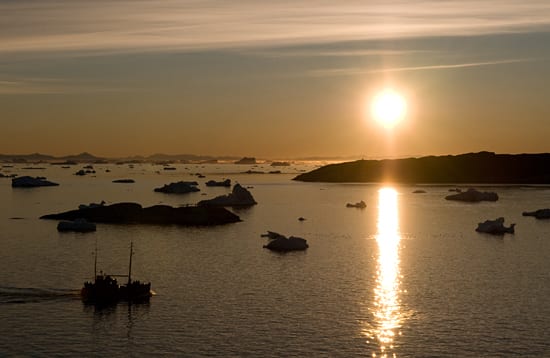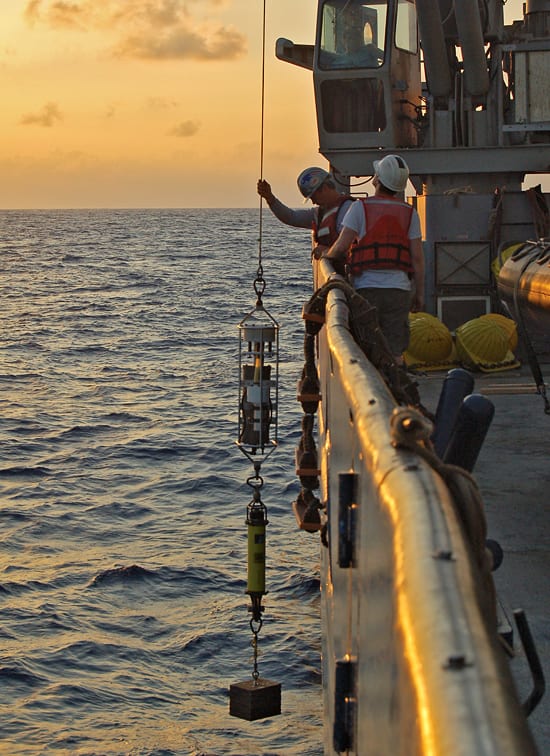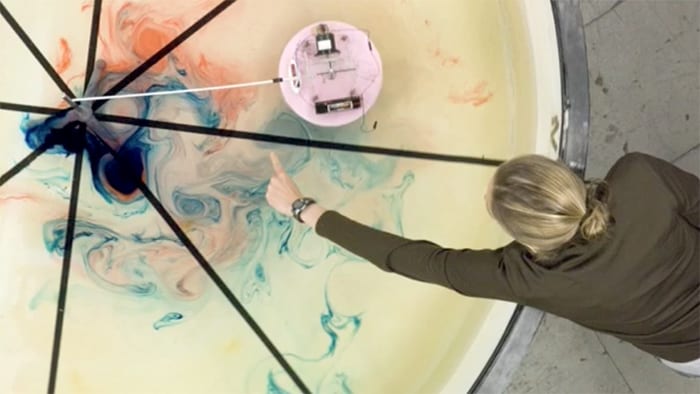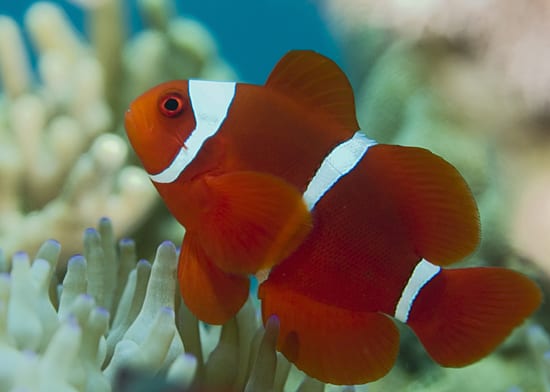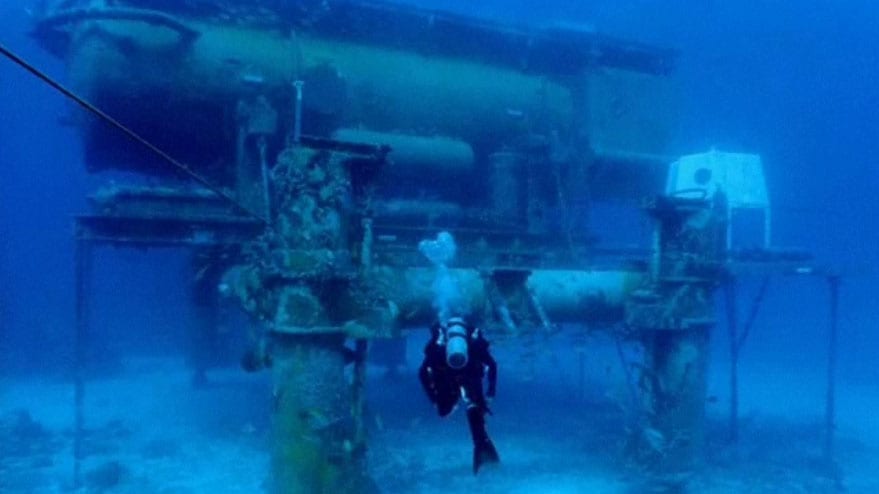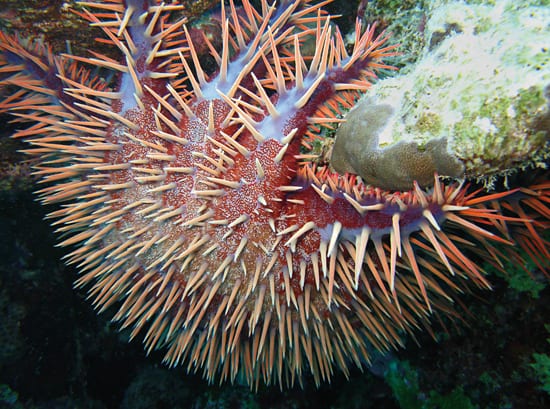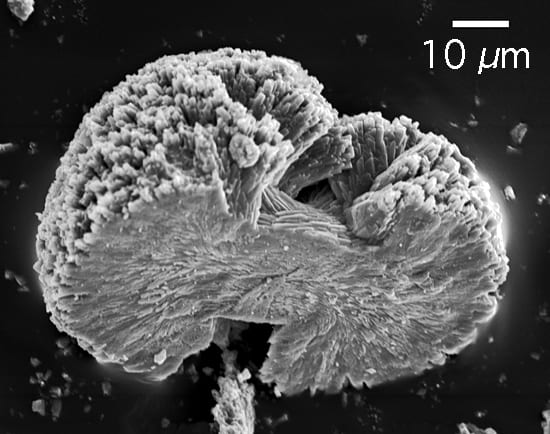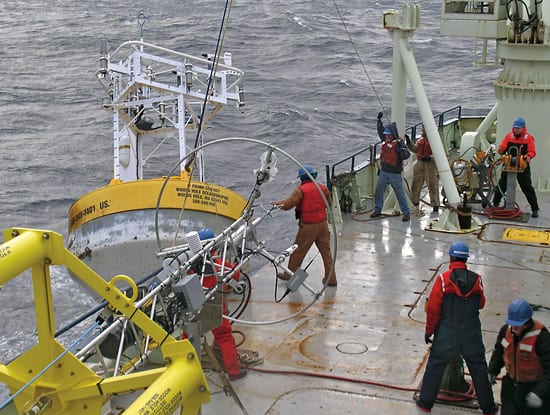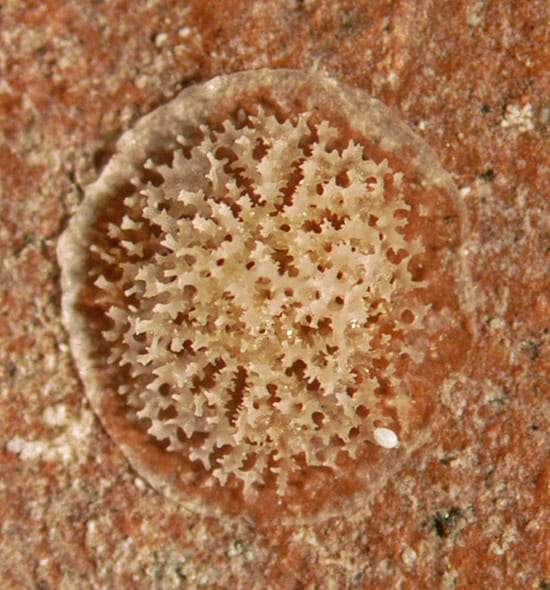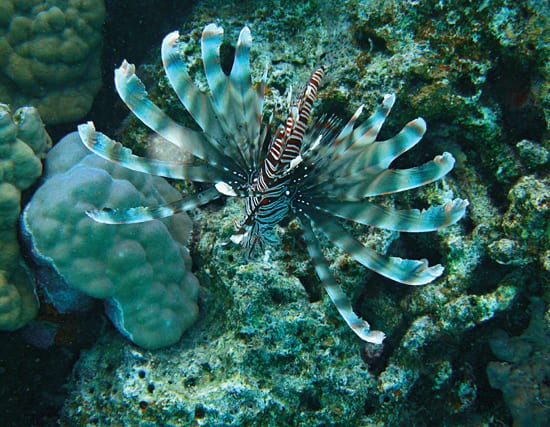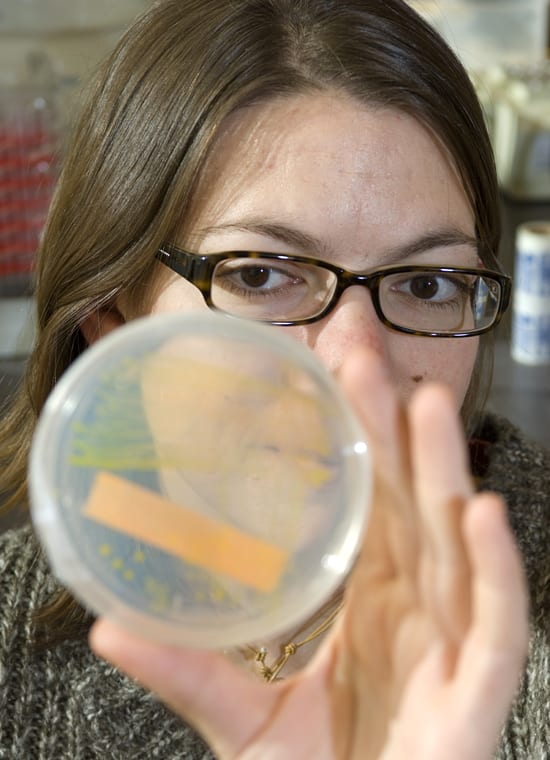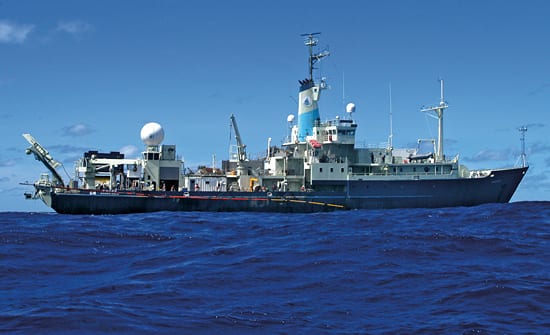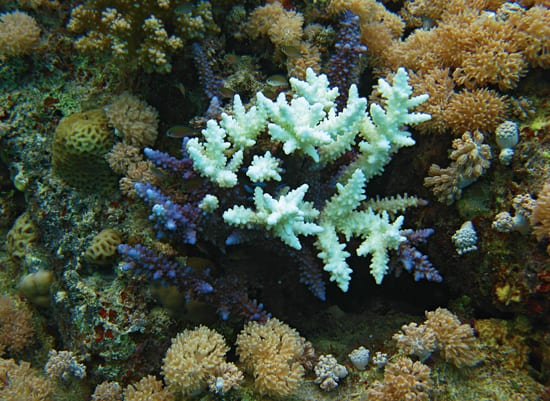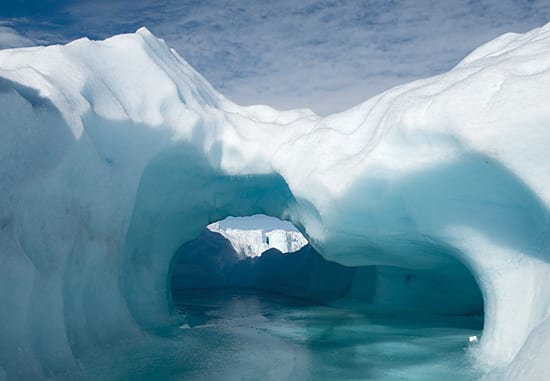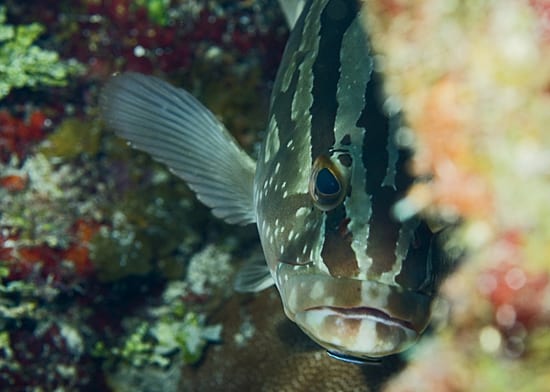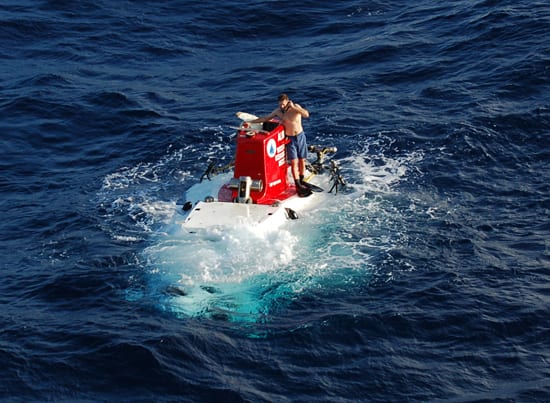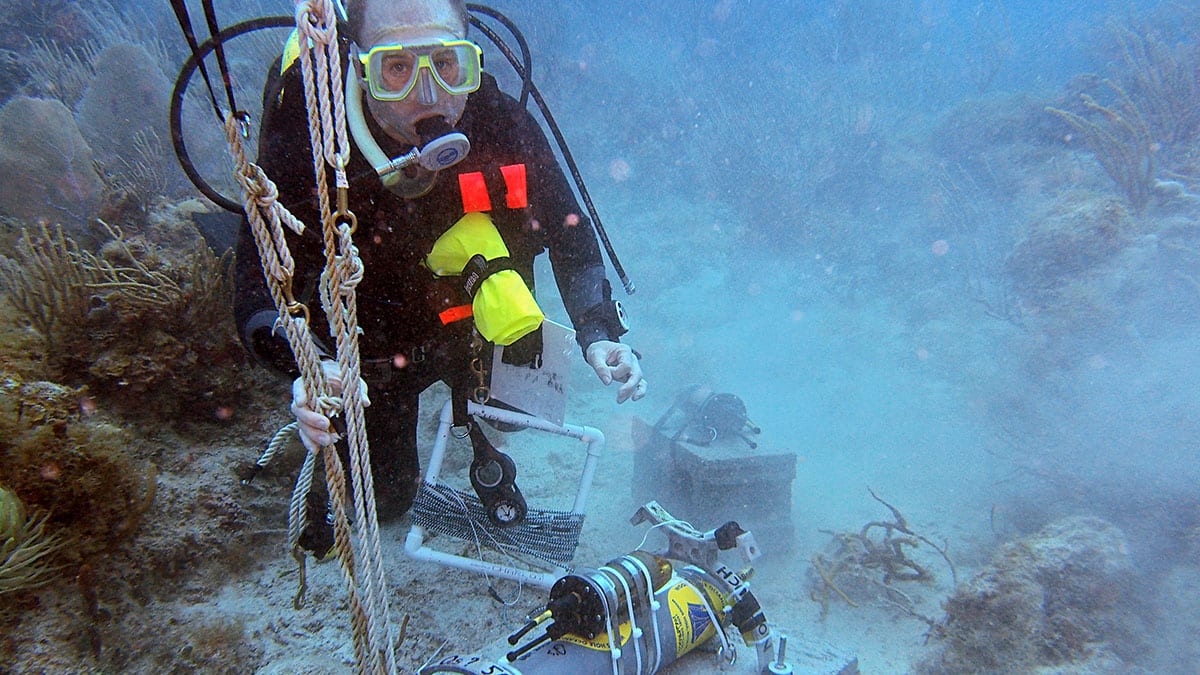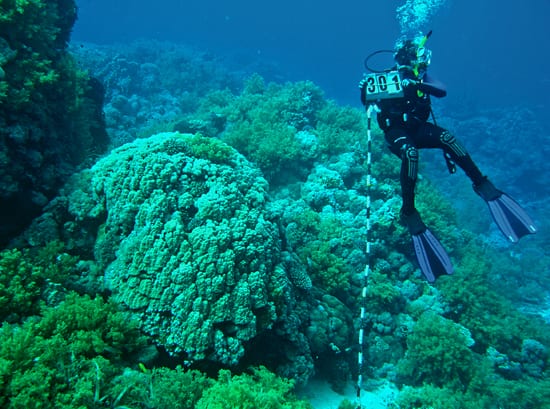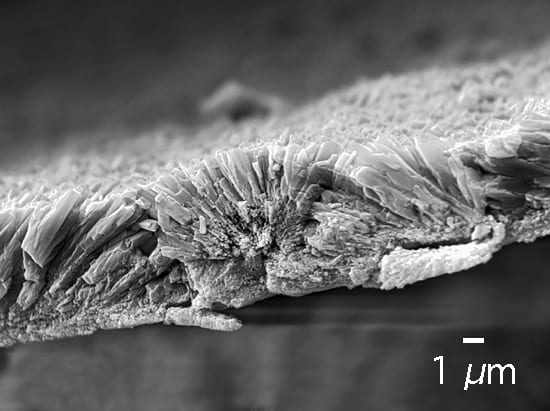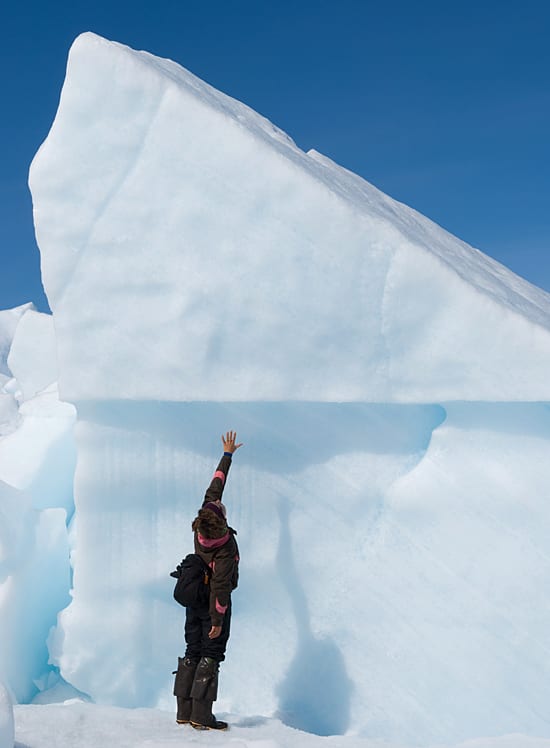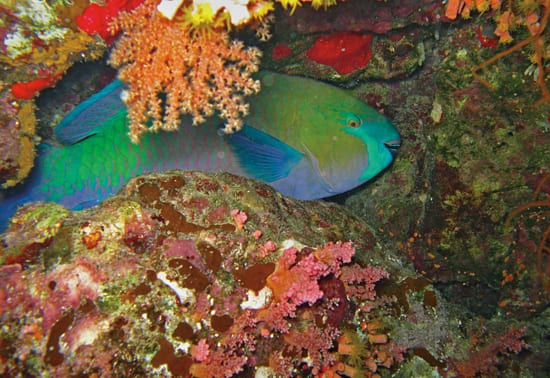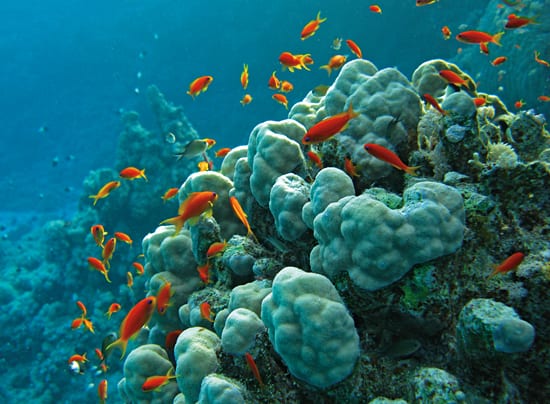Multimedia Items
Arctic summer night
Midnight in Greenland, in the summer, means the sun still shines. “For recent arrivals, the round-the-clock daylight streaming in the hotel windows have wreaked havoc on our internal clocks,” wrote…
Read MoreNew faces at old places
Small mushroom-shaped coral colonies are young recruits that have settled on a large dead coral in the Red Sea. Juvenile corals are continually colonizing hard substrates, including ancient colonies that…
Read MoreMooring away
In November 2007, R/V Atlantis Bosun Patrick Hennessy (left) and MIT/WHOI Joint Program graduate Benjamin Walther deploy a pump mooring during the LADDER III (LArval Dispersal on the Deep East…
Read MoreWhat Makes the Great Ocean Currents Flow?
A graduate student explores the Gulf Stream and the Kuroshio
Read MoreTracking reef fish larvae
A spine-cheek anemonefish (Premnas biaculeatus), or maroon clownfish, swims along a coral reef in Kimbe Bay, Papua New Guinea. As part of an international collaboration, WHOI biologist Simon Thorrold and…
Read MoreA Deep-sea Chemical Sniffing Bloodhound
Learn why WHOI deployed a compact, deep-sea mass spectrometer—an underwater “bloodhound”—to sniff and analyze trace chemicals in the ocean.
Read MoreSlow motion destruction
Gliding on hundreds of tiny suction-cup feet, A Crown-of-thorns sea star roams the reef, consuming immobile corals and leaving bare coral skeleton behind. Common in the Pacific and Indian Oceans…
Read MoreExperimental crystals
Crystals of aragonite, a form of calcium carbonate, grew together in a “bowtie” bundle—a classic mineral crystal growth pattern—when grown in the laboratory under controlled experimental conditions. This experiment is…
Read MoreBuoys hunting for data
Researchers and crew on the research vessel Knorr prepare to recover a meteorological buoy that had broken loose in February 2007. They were in transit to the fourth of six…
Read MoreChristmas Coral
New skeleton made by a two-week old baby Porites “porous” coral reared in an experimental aquarium at the Bermuda Institute for Ocean Sciences looks like a miniature Christmas tree. The…
Read MoreA warning
A lionfish spreads out distinctively-patterned fins around its body and shows its zebra stripes. Such striking beauty hides a deadly secret: the lionfish has venomous spines hidden among the dorsal…
Read MoreBacterial conversations
Holding up a culture plate, Joint Program student Laura Hmelo checks the growth of bacterial colonies. Hmelo is studying a phenomenon called bacterial “quorum sensing”— how marine bacteria found in…
Read MoreA very long corer
In 2007, WHOI geologists retrieved the first sediment cores with the newly installed “long-corer” on the research vessel Knorr. Bill Curry, Jim Broda, and several WHOI colleagues conceived and built…
Read MoreWhen corals bleach
Coral’s colors come from symbiotic algae cells living inside individual corals, or polyps. This “bleached” coral has expelled much of its algae in response to the stress of unusually warm…
Read MoreOnce a lake, now a canyon
WHOI researchers took a 40 minute hike from their camp on Greenland’s ice sheet this summer to this lake bed (full, it measured more than 3 kilometers in diameter). An astounding…
Read MorePeek-a-boo grouper
A Nassau grouper (Epinephelus striatus) peeks out from his hiding place along Glover’s Reef in Belize. These large fish have a breeding behavior that makes them especially vulnerable to overfishing…
Read MoreReady for a lift?
Alvin breaks the surface and engineering assistant Mike McCarthy talks to the pilot in preparation for recovery operations after a LADDER III project dive to a hydrothermal vent site in…
Read MoreBiology Photo Highlights
Measuring corals in the Red Sea
Through a research agreement with King Abdullah University of Science and Technology, WHOI scientists are studying coral reef ecosystems, fisheries, and water circulation along Saudi Arabia’s Red Sea coast. The…
Read MoreCrystals from corals
Seen under a microscope, tiny crystals of aragonite (a form of the mineral calcium carbonate) are carefully organized into a “dissepimental sheet” in the skeleton of a Porites coral. Corals…
Read MoreReaching for the high water mark
Until it drained, the depth of this lake on Greenland’s ice sheet reached seven feet (the day before this photo was taken, the spot where University of Washington graduate student Kristin…
Read MoreFood by day, shelter at night
At night, illuminated by the photographer’s flash, a brilliant 18-inch-long parrotfish hides in a niche surrounded by equally brilliant corals in the Red Sea. In daylight, parrotfishes feed on coral,…
Read MoreWaiting for a ride
After dismantling six sleeping tents, a cook tent, and packing instruments and gear, WHOI and University of Washington scientists (who had spent weeks working on Greenland’s ice sheet) waited for…
Read MoreRed Sea reef
Reef-building corals create habitats for many other organisms. The corals reefs of the Red Sea are highly diverse and unique in the world, providing shelter and sustenance for abundant fishes…
Read More
